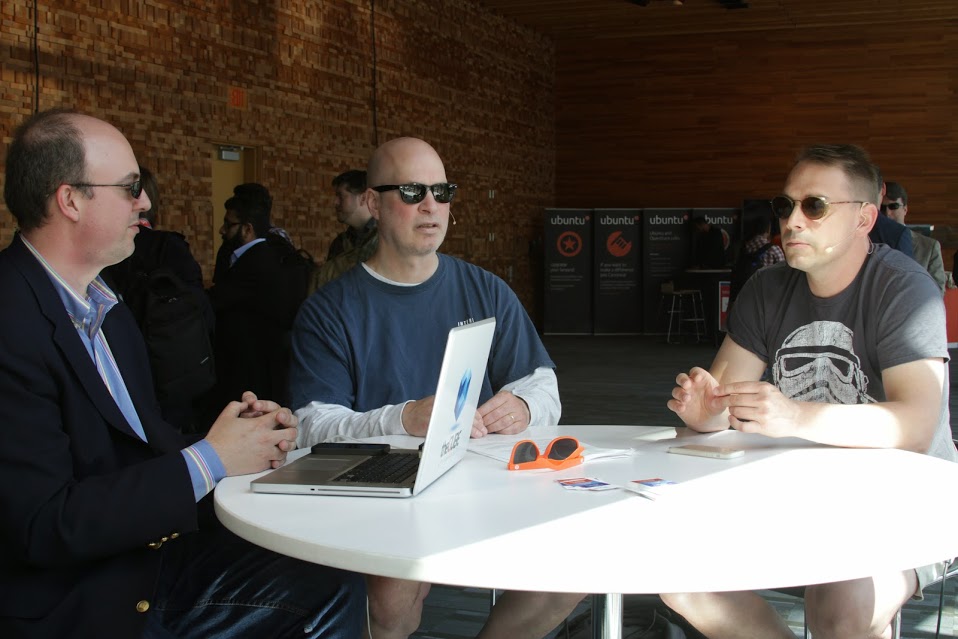 NEWS
NEWS
 NEWS
NEWS
 NEWS
NEWS
David Meyer, SP CTO and chief scientist at Brocade Communications Systems, Inc., and Tom Nadeau, a distinguished engineer at Brocade, met with theCUBE during the OpenStack Summit to talk about the state of networking in OpenStack, given that the initial release of Neutron was, unfortunately, not as stable as consumers hoped.
Meyer offered his explanation. “There’s kind of a meta angle on this,” he said. “One of the problems we had in OpenDaylight … and one of the reasons why there was sort of a divergence between OpenDaylight and basically in Neutron … from a perspective of the OpenDaylight community, we weren’t really participating with the Neutron community, and so that has changed. There’s this good integration going on that we didn’t have last year.”
According to Nadeau, “I think things have evolved a bit, but there’s still work that needs to be done. We’ve done a lot of work in ODL (OpenDaylight), where we’ve gone in and sort of brought things up to snuff a bit. The project got sort of left alone a little bit when one of the vendors kind of departed … So we’ve come back and rebooted that project.”
But rebooting it has taken time. “It’s kind of an iterative thing. So we’ve spent time sort of getting things back, getting people together, getting people working on it regularly,” he said. “Guys from Red Hat, guys from Intel, and a couple of other folks I think are coming in. So I think that’s good, but I think there’s more work that needs to be done between the sort of Neutron ML2 interface to ODL versus what’s going on the southbound side … Plus the group based policy or policies situation … It’s going to take time.”
Meyer said that controversy in the industry is also a factor as they move forward with Neutron and OpenDaylight integration. “What it came down to … is that there’s sort of overlay and underlay management going on, and what Neutron is good at is overlay management. And so the ideal role for something like OpenDaylight is sitting between the two, so it has visibility into the overlay and the underlay, and it has kind of a unique position.”
“There’s a bit of a philosophical divide with respect to this,” Meyer continued. “People on one end of the overlay spectrum believe that the overlay should know nothing about the underlay …. There are other people who go, well, you need to understand what the overlay is, otherwise you can’t debug it, you can’t optimize it, all of this stuff. And so there’s controversy there …. So ODL is sitting in the ‘we do both camp,’ and there’s controversy around that. I think there’s evolution we’re going to see over the next year in all of this.”
Nadeau believes ODL’s ability to bridge systems is actually a strength, not a weakness. “There’s this continuum, right, and I think the cool part about the OpenStack/ODL integration story is you can actually slide that around, depending on how you want to do it. It’s not prescriptive in one or the other.”
Watch the full interview below, and be sure to check out more of SiliconANGLE and theCUBE’s coverage of OpenStack Summit Vancouver 2015.
Support our mission to keep content open and free by engaging with theCUBE community. Join theCUBE’s Alumni Trust Network, where technology leaders connect, share intelligence and create opportunities.
Founded by tech visionaries John Furrier and Dave Vellante, SiliconANGLE Media has built a dynamic ecosystem of industry-leading digital media brands that reach 15+ million elite tech professionals. Our new proprietary theCUBE AI Video Cloud is breaking ground in audience interaction, leveraging theCUBEai.com neural network to help technology companies make data-driven decisions and stay at the forefront of industry conversations.